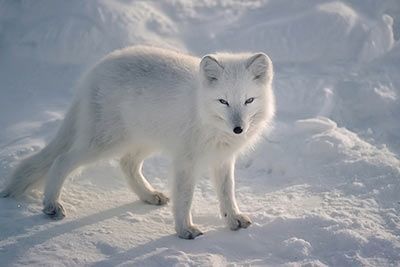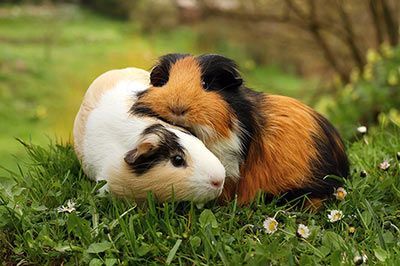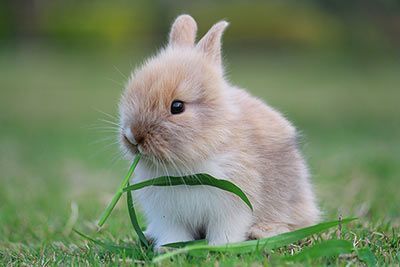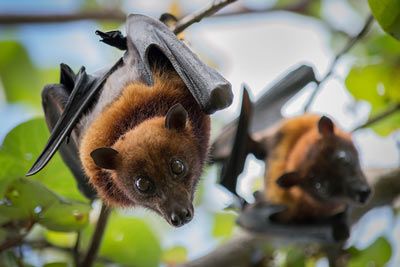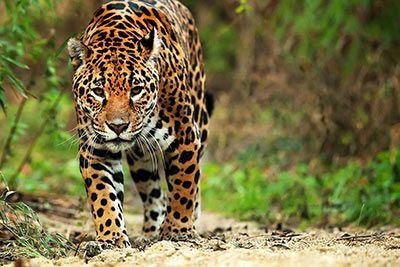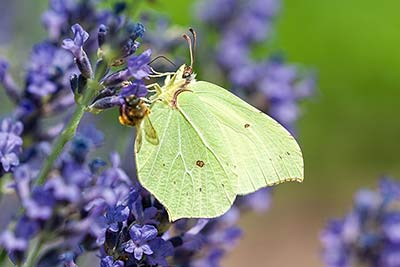Shrew
Shrew Facts
| Size | 2.3-3.9 in (6-10 cm) |
| Speed | Unknown |
| Weight | 0.0006 to 3.5 oz (18 mg to 100 grams) |
| Lifespan | 1-2 years |
| Food | Insects, larvae, snails, invertebrates |
| Predators | Cats, raccoons, foxes |
| Habitat | Europe, Asia, Africa, North America, Central America |
| Order | Eulipotyphla |
| Family | Soricidae |
| Scientific name | Sorex |
| Characteristics | Proboscis-like nose |
Main Characteristics
Shrews are insectivores, just like moles and hedgehogs. They are solitary animals that may be active during the day and/or at night. Their eyesight is poor but their senses of hearing and smell are very good. They are aggressive and some of them are venomous. There are over 350 types of shrew, e.g. the bicolored shrew, greater white-toothed shrew, lesser white-toothed shrew, African mole shrew, water shrew and piebald shrew.
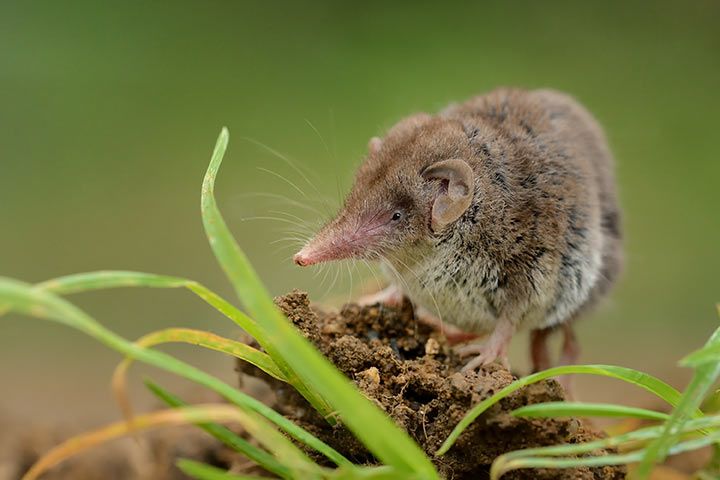
Habitat and Distribution
Where Do Shrews Live?
Shrews live in all kinds of habitats, but mostly moist woodland. There are also shrews that live underground, like the Asian mole shrew and the African mole shrew. And some that have adapted to water: the Himalayan water shrew, the elegant water shrew and the Eurasian water shrew. Water shrews are exceptional swimmers. Their fur traps countless tiny air bubbles that keep the animal safely on the surface.
Appearance and Anatomy
The World’s Smallest Mammal
The Etruscan shrew is the smallest mammal in the world. Its body grows to just 1.3 to 1.8 inches (35-48 mm) and its tail is just 1 to 1.1 inches (25-30 mm) long. It weighs just 0.0006 to 0.0008 oz (18-25 mg). The largest shrew is the Asian house shrew. It grows to 4.7 to 5.9 inches (12-15 cm) long and weighs 1.7 to 3.5 oz (50-100 grams). On average, these animals grow 2.3 to 3.9 inches (6-10 cm) long.
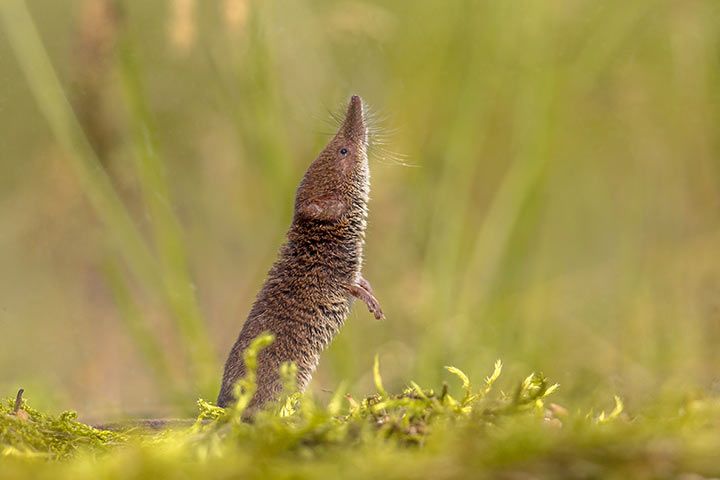
Diet
Shrews mostly eat insects, larvae, worms and slugs. But they also hunt mice, scorpions, snakes and frogs.
Behavior
How Do Shrews Hunt?
You might not expect it from such a dainty, delicate animal, but they have a clever trick up their sleeves: they paralyze their prey with venom! As this toxin doesn’t kill, just stuns, the shrew can simply tuck into a living buffet. Thanks to their high heart rate and energy consumption, they always need to eat.
Do Hedgehogs Hibernate?
Yes, hedgehogs hibernate. In fact, there are only a few animals that really hibernate. Most of them are just in a state of dormancy, they wake up every now and then and have a bite. However, hibernating animals sleep during the whole winter and do not eat anything. Why?
They would'nt find something to eat in the cold season, so their motto could be: "I'm sitting it out". In order not to use too much energy, they slow down their metabolism, heartbeat, breathing and lower their body temperature. Hibernation lasts from about October/November to March/April.
Here, you’ll find our article about venomous mammals like the short tailed shrew and the water shew.
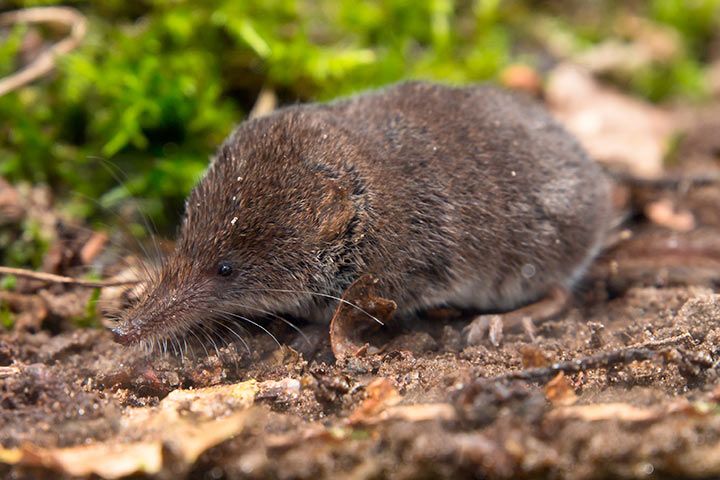
Senses and Abilities
Echolocation
Bats aren’t the only animals to use echolocation. Shrews also use it to find their way in their habitats. When hunting, they rely primarily on their sensitive whiskers.
Shrews Can Shrink Their Organs and Bones
Biologist Dr. Javier Lázaro Tapia at the Max Planck Institute for Ornithology discovered that shrews can make organs such as their hearts and lungs smaller. They can shrink their brains by 20% to 30%. They can even shrink their bones. They can reduce the size of their skulls by 15%. But why do they do it? In winter, many animals hibernate. But not the shrew. To save energy, they simply shrink. The smaller their organs and the lighter their bodies, the less energy and food they need to survive.
Shrew Heart Rate
The human heart beats around 50 to 100 times a minute. A shrew’s heart beats 800 to 1,000 times. The Etruscan shrew’s heart beats 1,500 times a minute. That’s more than a hummingbird in flight! Shrews are always on “high alert”. So they can even die of a heart attack due to shock.
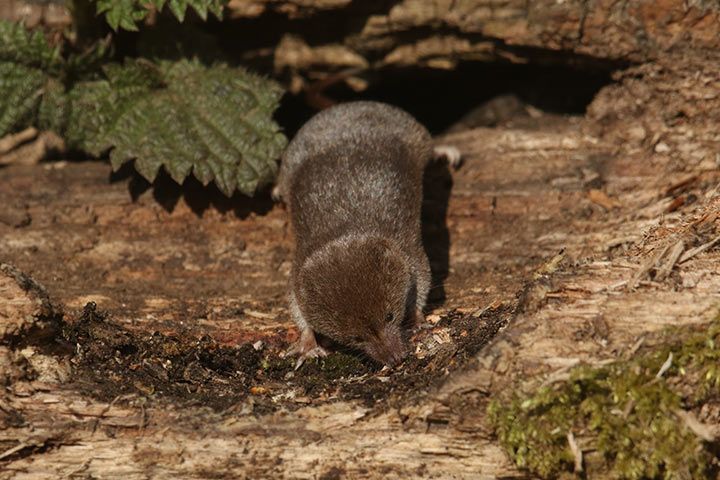
The Shrew Is Related To:
- Mole
- Solenodon
Animals in the Same Biome:
- Badger
- Beaver
- Eagle Owl
- Great-Spotted Woodpecker
- Marten
- Opossum
- Raccoon
- Red Fox
- Red Squirrel
- Skunk
- Stoat
- Weasel













